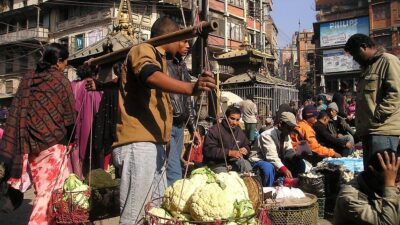As urbanization continues to reshape our landscapes, community connections often fray in the process. However, one vibrant lifeline connects city dwellers to their neighbors, their environments, and the very food they consume: local farmers’ markets. These bustling marketplaces serve not only as hubs for fresh produce but also as essential components of urban food systems, fostering community, promoting sustainability, and enhancing public health.
Strengthening Community Bonds
Farmers’ markets transcend the mere exchange of goods; they cultivate a sense of community belonging. By bringing together local farmers, artisans, and consumers, these markets create a social space where relationships can flourish. Urban dwellers can forge connections with those who grow their food, leading to conversations about sustainable practices, seasonal produce, and even cooking tips.
Moreover, farmers’ markets often serve as cultural melting pots, showcasing the diversity of culinary traditions and goods within urban settings. This communal spirit transforms shopping into an experiential gathering, reinforcing the importance of local relationships where participants feel invested in each other’s success.
Supporting Local Economies
Local farmers’ markets are vital for stimulating urban economies. They provide small-scale farmers and artisanal producers with a direct outlet for their goods, often cutting out middlemen and allowing them to receive fair prices for their labor. This financial sustainability is crucial for family-run farms, which struggle against the industrialized agriculture model.
Additionally, money spent at farmers’ markets tends to circulate within the local economy. Research indicates that for every dollar spent at a farmers’ market, a significant percentage stays in the community, supporting local jobs and businesses. By choosing to shop locally, consumers not only enjoy fresh and unique products but also contribute to safeguards against the economic volatility that can arise from global supply chains.
Promoting Sustainability
At the heart of many farmers’ markets lies a commitment to sustainability. Local producers often employ eco-friendly farming practices, reducing the carbon footprint associated with transporting food across long distances. They champion seasonal eating, encouraging consumers to embrace what is ripe and in abundance, thus promoting a diet more aligned with natural food cycles.
Moreover, farmers’ markets amplify awareness about food systems, igniting discussions around issues like food sovereignty, climate change, and ethical eating. Through community events, workshops, and educational programs, markets serve as platforms for learning, empowering consumers to make informed dietary choices that reflect both personal values and communal responsibilities.
Enhancing Public Health
Access to fresh fruits, vegetables, and other healthy foods is pivotal in combating urban health crises, including obesity and diet-related diseases. Farmers’ markets bridge gaps in food deserts—areas with limited access to affordable, nutritious food—by offering a variety of fresh produce at reasonable prices.
Furthermore, many markets accept various forms of payment, including food assistance benefits like SNAP (Supplemental Nutrition Assistance Program), ensuring that all community members can participate in these healthy food initiatives. Programs that provide incentives for low-income shoppers can further enhance accessibility, thereby democratizing nutrition and fostering a healthier society.
A Model for Resilience
As cities continue to grapple with the challenges posed by climate change, economic inequality, and public health crises, farmers’ markets emerge as resilient pillars within urban food systems. They exemplify a community-driven approach to food distribution, one that is adaptable, inclusive, and focused on wellness.
In response to recent global challenges—such as the COVID-19 pandemic—many markets have innovated to continue serving their communities safely. Curbside pickups, online marketplaces, and expanded delivery services are just a few adaptations that reflect the flexibility and creativity inherent in these community spaces.
Conclusion
Farmers’ markets represent more than a place to buy fresh produce; they are vibrant community hubs that contribute significantly to urban food systems. By fostering relationships among consumers and producers, supporting local economies, promoting sustainability, and enhancing public health, these markets weave the fabric of urban life ever tighter. In an era marked by disconnection, farmers’ markets remind us of the power of community—the joy of gathering, sharing, and nurturing both ourselves and our environment. As we look to the future of our cities, let us celebrate and support these vital spaces that connect us to each other and our food.



